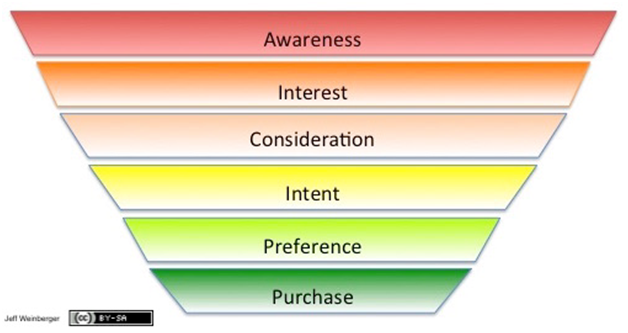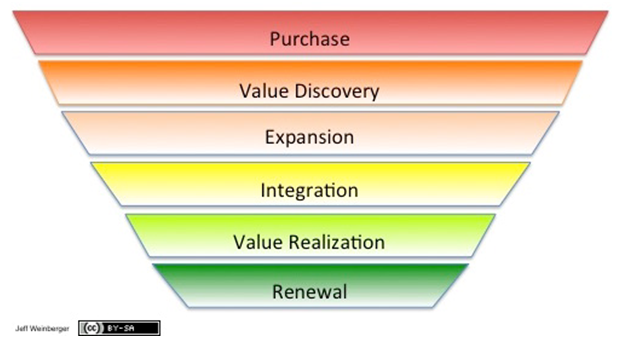Drop the Persona. Market to a Person.
Posted onNearly all the marketers I meet seem, in some way, obsessed with personas. Personas are convenient little tools that describe some set of attribute of a hypothetical — and supposedly typical — customer that are intended to allow everyone in the company to understand this customer and what they want.
If you’ve spent time talking with me about personas, you know exactly how I feel about them: I hate them.
No, I don’t hate the idea that there should be an understanding of the customer, and everyone should be able to see what it is. That’s necessary for getting teams aligned and driving market growth (see my discussion on this in my previous post).
I hate the idea because most of the marketers I meet use them as crutches — and not very useful crutches at that. I hate that most marketers try so hard to be specific and complete in their description of “Finance Francine” that their list of things “Francine” cares about are either redundant or useless in creating messaging that will convince the hypothetical “Francine” to spend non-hypothetical money.
Have you ever seen a list like this:
“CEO Chuck” cares about:
- Increasing revenue
- Increasing profit margin
- Meeting set revenue and profit goals
- Not losing revenue
- Not losing profit margins
- Increasing net income
OK, I’m going a little overboard, but you’ve seen that list. The problem you see with it is that it’s redundant. I see that and something far more dangerous to your marketing:
The list is meaningless.
If the person working on personas in your organization makes lists like this one, you probably don’t ever look at them for anything you do. If you do look at them, I’d ask you whether they help you target content, create advertising or email campaigns or even inform sales scripts.
A good test for whether you have a useful persona is whether your average sales rep can use the language in the persona document to describe how you help your customer and the prospects on the other side of that table (or other end of that call) respond with “Yes!! That’s exactly what I need!” How often does that happen to you?
So what do we do about this? How do we get a useful understanding of the people to whom we are selling? (And yes, if you’re selling to businesses, you’re still selling to people)
Focus on the person.
It sounds easy, doesn’t it? Well, it is, but then again, it isn’t. They say understanding other people and building relationships is hard. When you are selling any kind of offering, you are building a relationship with another person (or people), and it’s exactly as easy and hard as with anyone.
What’s the key to getting this right?
In an earlier post, I wrote about the importance of knowing how you and your offering make a difference in the lives of your customers. There are three steps to making this an integral part of your marketing:
- Understanding your customer’ needs and aspirations — most importantly, the ones they don’t articulate
- Understanding what needs and aspirations you can enable
- Understanding how you help your customer meet those needs and achieve those aspirations
Revisiting “CEO Chuck,” here’s how this might work:
Chuck runs a small software company. Chuck is trying to solve the disconnects within his organization. He knows that if product, sales and marketing could stop arguing and get on the same page, it would be easier and smoother to generate leads and grow the sales pipeline. His demand generation leader says the biggest obstacle to getting prospects into the pipeline is knowing how to effectively find the right kind of person to whom to deliver messages. His investors are breathing down his neck about meeting sales targets and showing some eye-popping PR stories. His engineers are bugging him about prioritizing new features and bug fixes, and claim they can’t understand what they should be doing first — it all seems important.
Now let’s say you are selling some kind of marketing product to Chuck. You could tell Chuck your offering increases revenue, and you’d think that would be important enough for him to buy it. But let’s say your offering could help get the pipeline process unified between sales and marketing, and make sure they both have at least common numbers, account information and the like. You could then offer Chuck a solution to at least part of the sales and marketing friction problem, making his pipeline move more smoothly to help grow revenue.
Some marketers will see that as a more specific and, therefore, smaller offer. It’s not. It helps solve the problem your prototypical customer thinks they have. It makes sure you can deliver something they think is valuable to them and that makes a difference in their lives. And if you do it successfully, I am pretty sure they will tell their friends and colleagues you made a whole set of challenges go away.
This illustration is an over-simplification for the purposes of keeping this post readable. But the point of doing this exercise — and doing it well — is you get to understand your customer as a person, not as a hypothetical profile.
And when you stop making claims to personas and start making promises to people, you can start delivering real value and changing their lives.

